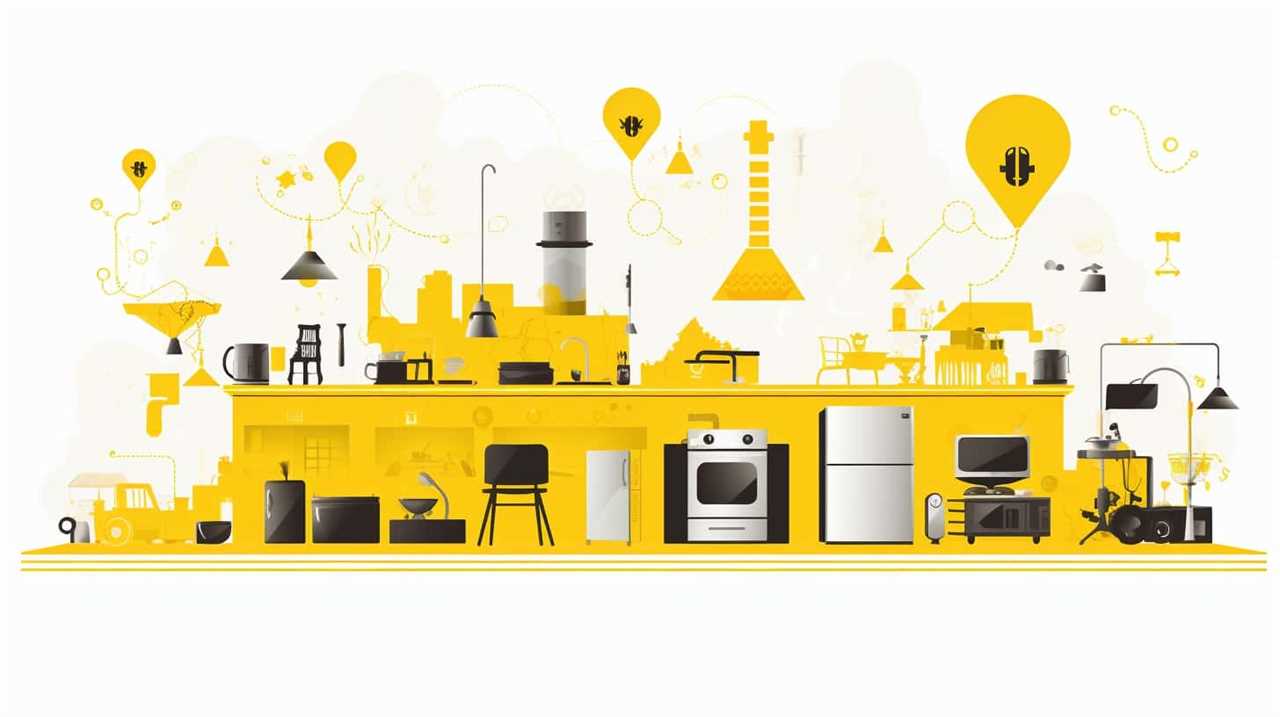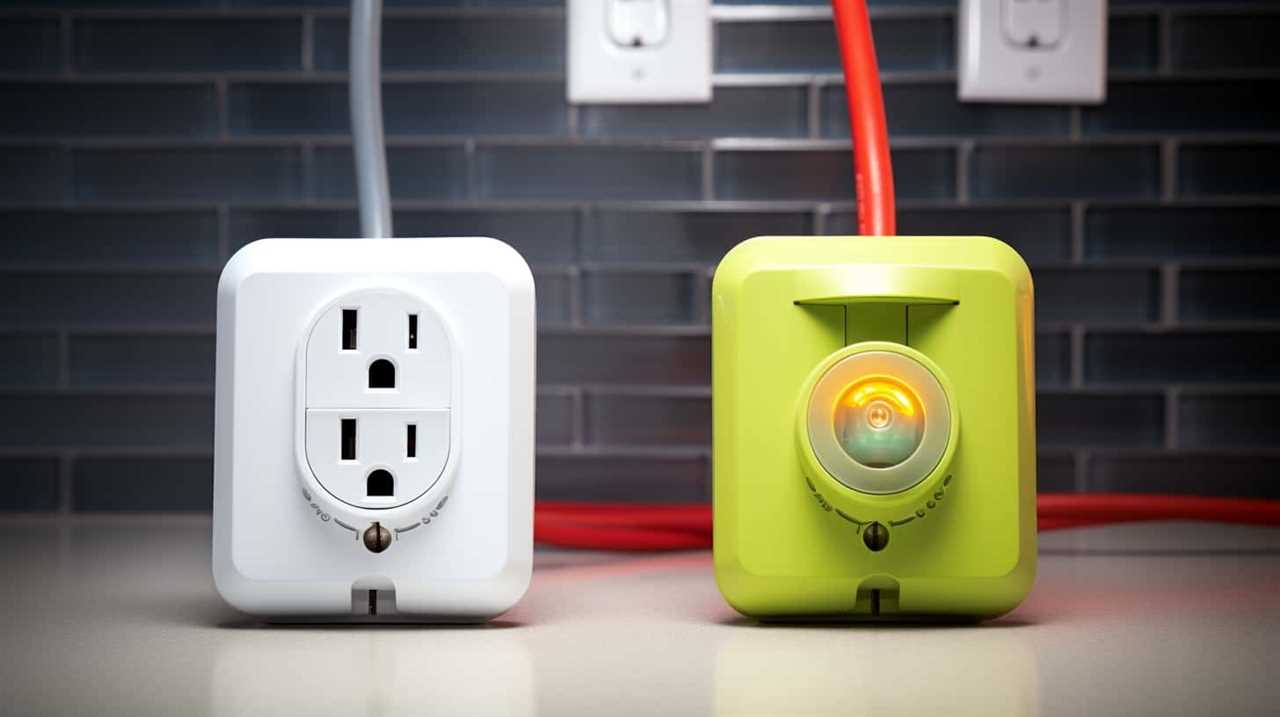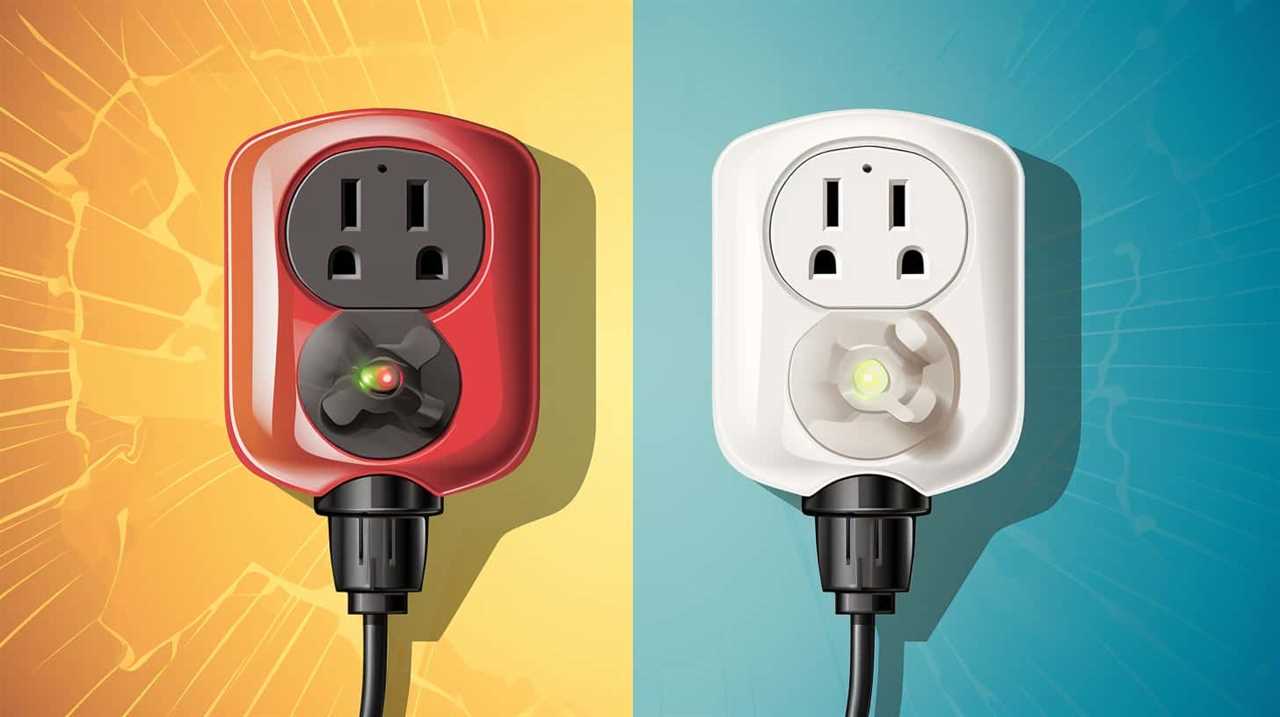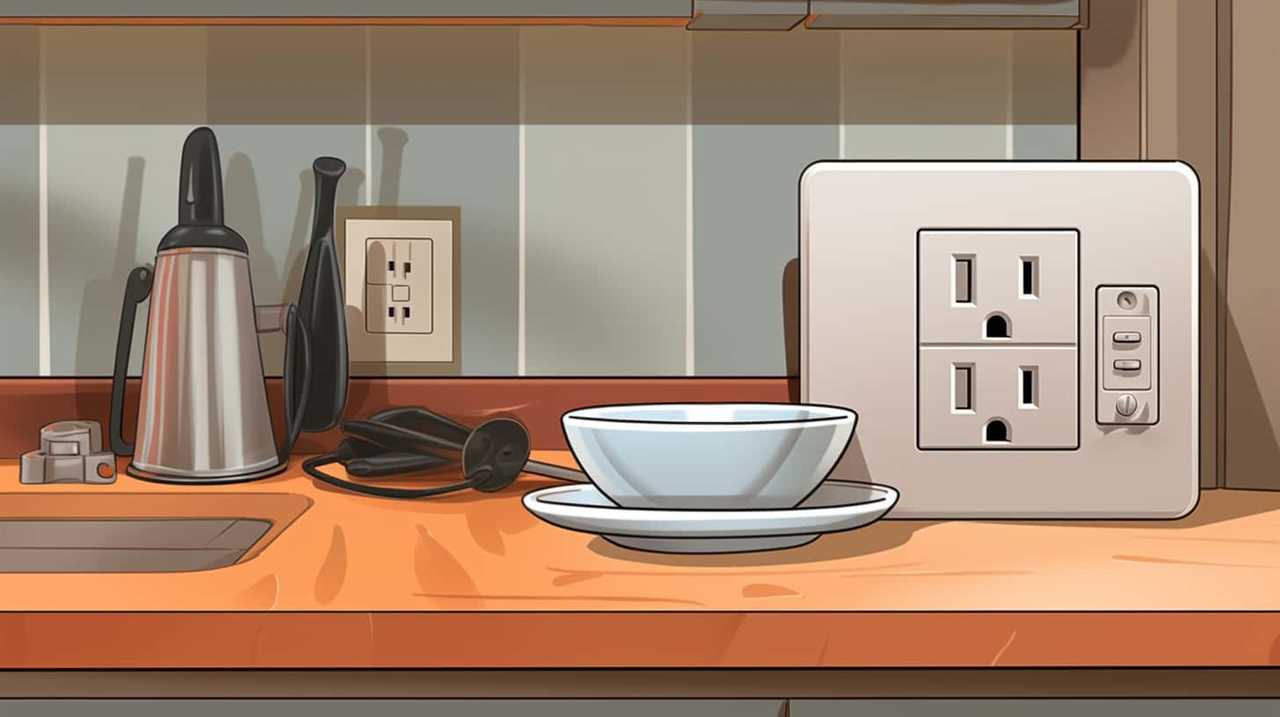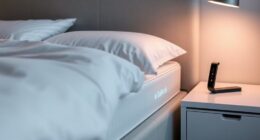Are you curious about whether your appliances are using electricity even when they’re plugged in but not in use? Well, we’ve got the answers for you!
In this article, we’ll dive into the concept of standby power and explore the hidden costs associated with it.
We’ll also debunk myths, provide tips for reducing energy waste, and discuss the future of standby power.
So, let’s embark on this journey to master the art of minimizing energy consumption together!
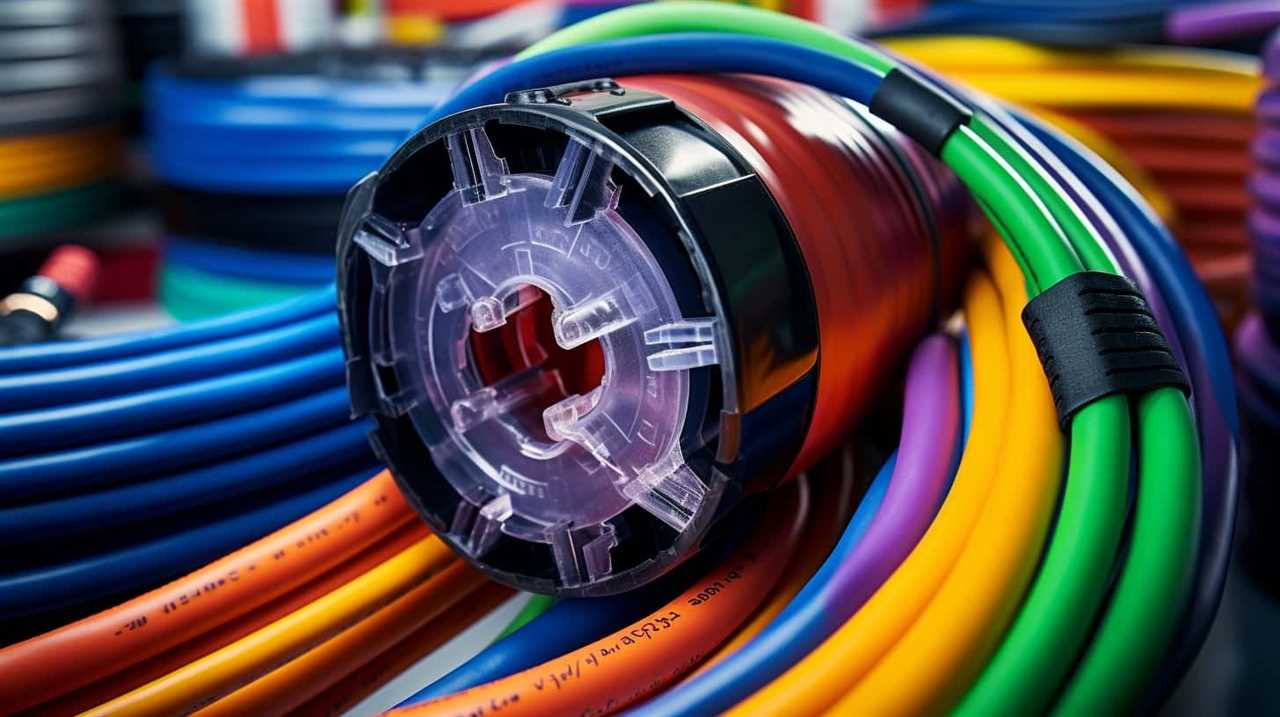
Key Takeaways
- Standby power refers to the energy consumed by electronic devices even when they aren’t in active use but are still plugged in.
- Standby power can account for up to 10% of a home’s total energy consumption.
- Unplugging devices can help reduce standby power consumption and save energy.
- Phantom load or standby power occurs when appliances continue to draw power from the electrical grid even when they appear to be turned off.
Standby Power: Understanding the Concept
We need to understand the concept of standby power.
Standby power refers to the energy consumed by electronic devices even when they aren’t in active use but are still plugged in. This hidden energy consumption can account for a significant portion of a household’s electricity usage. It’s estimated that standby power can contribute up to 10% of a home’s total energy consumption.
To address this issue, energy saving strategies can be implemented. One approach is to unplug devices when not in use. Another option is to use power strips with built-in timers or switches to easily turn off multiple devices at once. Additionally, advancements in technology have led to the development of energy-efficient appliances that consume less standby power.
The Phantom Load: Exploring Electricity Consumption
When it comes to electricity consumption, there are hidden factors that contribute to energy usage. One such factor is known as the phantom load, which refers to the electricity consumed by appliances even when they’re turned off or in standby mode.

This standby power consumption can add up over time and result in unnecessary energy waste. To mitigate this, one simple solution is to unplug appliances when they aren’t in use, helping to save energy and reduce electricity bills.
Hidden Energy Usage
To understand the hidden energy usage of appliances, it is important to consider the electricity consumed by them even when they are not in use. This phenomenon, known as phantom load or standby power, occurs when appliances continue to draw power from the electrical grid even when they appear to be turned off. The table below provides a visual representation of the hidden energy consumption of common household appliances:
| Appliance | Standby Power Consumption (W) |
|---|---|
| Television | 5 |
| Computer | 2 |
| Game console | 1 |
| Microwave oven | 3 |
| Coffee maker | 1 |
To reduce hidden energy consumption and save on electricity bills, it is important to adopt energy-saving strategies such as unplugging appliances when not in use, using power strips with on/off switches, or investing in smart power strips that automatically cut off power to devices in standby mode. By being mindful of hidden energy usage, we can take proactive steps towards a more energy-efficient and sustainable future.
Standby Power Consumption
As we explore standby power consumption, it’s important to understand the hidden energy usage of appliances and the impact it has on electricity consumption.

Standby power, also known as vampire power or phantom load, refers to the electricity consumed by appliances when they’re in standby mode or turned off. This standby power consumption contributes to a significant portion of overall energy usage in households and businesses. According to standby power statistics, it’s estimated that standby power can account for up to 10% of a home’s energy usage.
To address this issue, standby power management techniques have been developed. These techniques involve the use of power-saving features, such as power strips with on/off switches, smart power outlets, and energy-efficient appliances. Implementing these strategies can help reduce standby power consumption and contribute to energy conservation.
Unplugging to Save
Now, let’s delve into the topic of ‘Unplugging to Save’ and explore the impact of phantom load on electricity consumption. Unplugging your appliances when they aren’t in use can offer significant benefits in terms of energy conservation. Here are three reasons why:
- Reduced standby power consumption: Many appliances, such as televisions, computers, and chargers, continue to draw power even when they’re turned off or in standby mode. By unplugging them, you can eliminate this phantom load and save energy.
- Increased energy savings: The cumulative effect of unplugging multiple appliances can result in substantial energy savings over time. This proactive approach to managing electricity consumption can contribute to a more sustainable and eco-friendly lifestyle.
- Extended lifespan of appliances: Constantly keeping appliances plugged in can subject them to unnecessary wear and tear. By unplugging them when not in use, you can help extend their lifespan, reducing the need for premature replacement and further contributing to energy conservation.
Common Culprits: Appliances That Use Standby Power
Many household appliances, such as televisions and computers, consume standby power even when not in use. This hidden energy loss is known as standby power, and it occurs when appliances remain plugged in but aren’t actively being used.

Standby power management is the practice of minimizing this energy waste by implementing technology that reduces the amount of power consumed by appliances in standby mode.
Common culprits of standby power consumption include devices with remote controls, such as TVs and DVD players, as well as devices with digital displays or clocks, like microwaves and coffee makers.
It’s estimated that standby power can account for up to 10% of a household’s energy consumption.
The Hidden Costs: Impact on Your Utility Bills
Now let’s discuss the hidden costs of standby power and its impact on your utility bills.

By understanding how much energy your appliances consume, you can make informed decisions on how to save electricity and reduce your monthly expenses.
We’ll also explore energy-saving tips for appliances and techniques to accurately calculate energy consumption.
Energy-Saving Tips for Appliances
Using energy-saving tips for appliances can have a significant impact on our utility bills. By implementing energy-saving techniques and investing in eco-friendly appliances, we can reduce our overall energy consumption and save money in the long run. Here are three key tips to consider:
- Opt for appliances with the ENERGY STAR label: These appliances are designed to be more energy-efficient, reducing both your energy usage and utility bills.
- Use power strips: Plug multiple appliances into a power strip and turn it off when not in use. This prevents standby power consumption, which can account for a significant portion of your energy usage.
- Adjust your thermostat: Lowering your thermostat by just a few degrees in the winter and raising it in the summer can result in substantial energy savings.
Calculating Energy Consumption Accurately
To accurately calculate energy consumption and understand the hidden costs that impact our utility bills, we must consider the overall impact of plugged-in appliances. Calculating accuracy in energy consumption measurement is crucial for managing our electricity usage and reducing costs.

Accurate measurement allows us to identify which appliances are using the most energy and make informed decisions about conserving power. There are several methods for calculating energy consumption, such as using a watt meter or consulting the appliance’s specifications.
By accurately measuring our energy consumption, we can identify areas for improvement and take steps to reduce our overall electricity usage.
In the next section, we’ll discuss how to measure standby power and identify energy vampires, which are appliances that consume energy even when not in use.
Measuring Standby Power: How to Identify Energy Vampires
We can measure standby power by identifying energy vampires. These are devices that continue to consume power even when they aren’t in use. By identifying and reducing the power waste caused by these energy vampires, we can significantly reduce our overall energy consumption and save on electricity bills.

Here are three key ways to identify energy vampires:
- Use a power meter: A power meter can measure the standby power of individual devices, allowing you to identify which ones are consuming the most energy when they aren’t in use.
- Look for indicators: Some devices have indicators, such as glowing lights or displays, even when they’re turned off. These indicators indicate that the device is still using power.
- Check for remote control functionality: Devices with remote control functionality often have standby power consumption. If a device responds to a remote control, it’s likely consuming standby power.
Unplugging Vs. Turning Off: Which Is More Effective
One key question to consider is: which method is more effective in reducing energy consumption, unplugging or turning off appliances? To answer this question, let’s delve into the differences between unplugging and using power-saving modes.
Unplugging an appliance completely cuts off its power supply, eliminating any standby power consumption. On the other hand, using power-saving modes allows the appliance to enter a low-power state, reducing energy usage while still being connected to a power source.
To emphasize the impact of these methods, let’s take a look at the table below:

| Method | Energy Consumption | Convenience |
|---|---|---|
| Unplugging | Zero | Less convenient |
| Power-saving modes | Reduced, but not eliminated | More convenient |
As the table demonstrates, unplugging an appliance eliminates energy consumption entirely. However, it may be less convenient than using power-saving modes, which still consume some energy but offer convenience by allowing the appliance to remain connected.
To truly minimize energy consumption, it is essential to identify energy vampires – hidden culprits that consume power even when turned off or in standby mode. By unplugging these devices, we can achieve maximum energy savings.
The Power of Power Strips: Managing Standby Power
When it comes to managing standby power, there are three key points to consider.
First, standby power consumption refers to the energy used by appliances and devices even when they aren’t in use.

Second, power strips offer several benefits in managing standby power, such as the ability to easily turn off multiple devices with a single switch.
Lastly, there are energy-saving alternatives to power strips, such as smart power strips that automatically detect when devices aren’t in use and cut off power to them.
Standby Power Consumption
To manage standby power consumption effectively, it’s important to utilize power strips. Standby power, also known as vampire power or phantom load, refers to the electricity consumed by electronic devices when they’re in standby mode or turned off but still plugged in. This hidden energy vampire can account for a significant portion of a household’s energy consumption. By increasing standby power awareness, individuals can take steps to reduce this unnecessary energy usage and save money on their electricity bills.
Here are three key reasons why power strips are essential in managing standby power:

- Convenience: Power strips allow you to easily turn off multiple devices with a single switch, eliminating the need to unplug each device individually.
- Energy savings: By completely cutting off the power supply to devices, power strips prevent them from consuming standby power.
- Protection: Power strips often come with surge protection, safeguarding your devices from voltage spikes and potential damage.
Power Strip Benefits
Utilizing power strips is a practical solution for managing standby power consumption and reaping the benefits of energy savings and protection.
Power strips, also known as surge protectors, offer a range of advantages, including power strip safety and power strip surge protection. Power strip safety refers to the ability of these devices to prevent electrical fires and accidents by incorporating features like circuit breakers and overload protection.
Additionally, power strips with surge protection safeguard your electronic devices against voltage spikes and surges, which can cause irreparable damage.
By using power strips, you can conveniently control the power supply to multiple devices, reducing standby power consumption and saving energy.

However, it’s important to note that power strips aren’t the only solution for energy savings. There are alternative options available, which we’ll explore in the next section.
Energy-Saving Alternatives
By incorporating energy-saving alternatives such as power strips, we can effectively manage standby power and reduce energy consumption. Here are three energy-saving devices and power-saving techniques that can help us achieve this goal:
- Smart Power Strips: These power strips are equipped with advanced technology that automatically cuts off power to devices when they aren’t in use. They can detect when a device is in standby mode and shut off power to that device, saving energy in the process.
- Timer Power Strips: With these power strips, you can set specific times for your devices to turn on and off. This allows you to control when your appliances are consuming power, reducing unnecessary energy usage during idle periods.
- Energy Monitoring Power Strips: These power strips come with built-in energy monitors that provide real-time data on the energy consumption of your devices. By being aware of how much power each device is using, you can make informed decisions on how to reduce energy waste.
Energy-Efficient Alternatives: Smart Appliances and Power-Saving Modes
We have found that using energy-efficient alternatives, such as smart appliances and power-saving modes, can significantly reduce electricity consumption when appliances are plugged in. Smart home technology has revolutionized the way we interact with our appliances, allowing us to monitor and control energy usage in real-time.
Energy efficient appliances, on the other hand, are designed to use less electricity while still providing the same level of functionality. These appliances incorporate advanced technologies, such as improved insulation and energy-saving modes, to minimize power consumption. Power-saving modes, such as sleep mode or standby mode, can reduce electricity usage when appliances aren’t in use.

By utilizing these energy-efficient alternatives, households can decrease their overall energy consumption and lower their electricity bills.
Now, let’s delve into the next section to debunk the myths surrounding standby power and separate fact from fiction.
Standby Power Myths Debunked: Separating Fact From Fiction
Let’s debunk the myths surrounding standby power and uncover the truth behind its electricity usage when appliances are plugged in.
- Myth: Appliances in standby mode don’t use any electricity.
- Fact: Even in standby mode, many appliances still consume energy, albeit at a lower level.
- Myth: Unplugging appliances is unnecessary because they don’t use much power.
- Fact: Standby power can account for a significant portion of a household’s energy consumption over time.
- Myth: Power-saving modes are just a marketing gimmick.
- Fact: Power-saving modes can actually reduce energy usage by adjusting the appliance’s settings and functions.
It’s important to separate fact from fiction when it comes to standby power and energy saving myths. Understanding the truth can help us make informed decisions about minimizing energy waste and reducing our environmental impact.
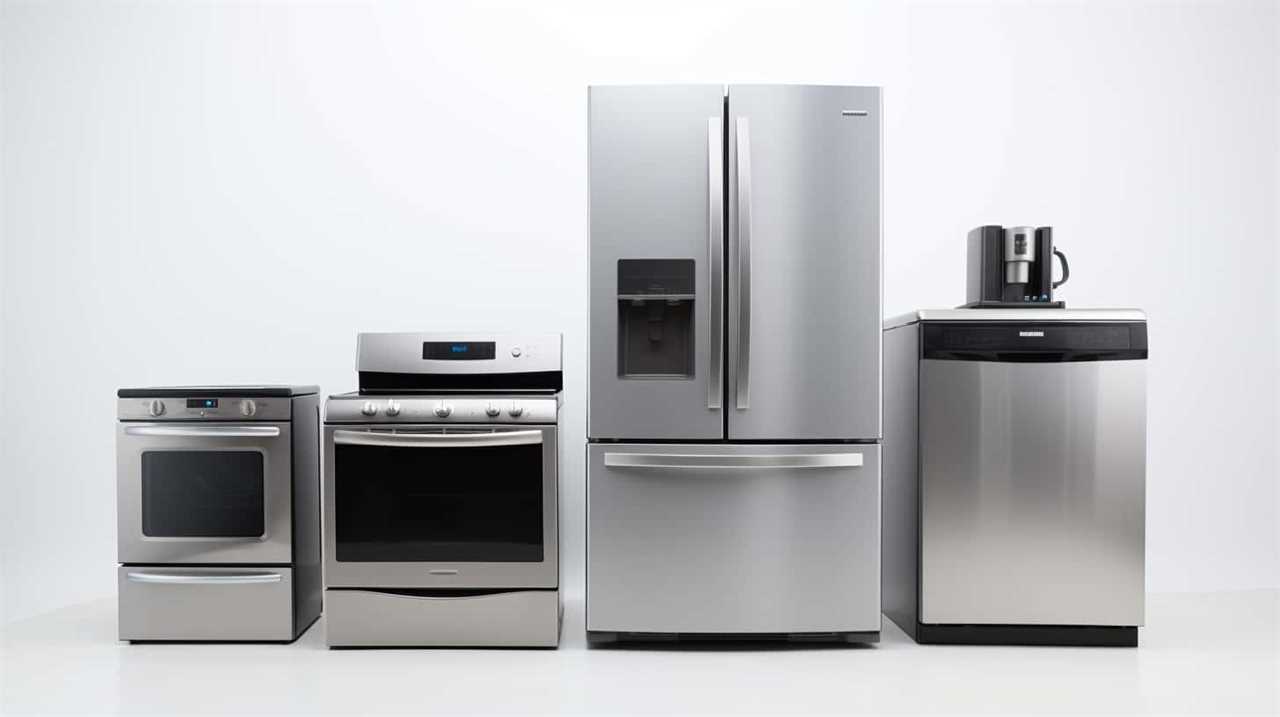
Now, let’s explore some tips for effectively reducing standby power and maximizing energy efficiency.
Reducing Standby Power: Tips for Minimizing Energy Waste
Taking proactive steps to reduce standby power can significantly minimize energy waste in our homes. By identifying and addressing hidden energy waste, we can effectively reduce our environmental impact. Here are some tips for minimizing standby power:
| Tips for Minimizing Standby Power | Benefits |
|---|---|
| Unplug appliances when not in use | Reduces energy consumption |
| Use power strips with an on/off switch | Conveniently turn off multiple devices |
| Enable power-saving settings on electronics | Automatically reduces energy usage |
| Invest in Energy Star certified appliances | Ensures energy-efficient performance |
| Conduct regular energy audits | Identifies areas of improvement |
Implementing these strategies can help us save energy and reduce our carbon footprint. By taking control of our energy usage, we can make a significant impact on the environment while also saving money on our utility bills. Let’s make a conscious effort to minimize standby power and contribute to a sustainable future.
Saving Money and Energy: the Benefits of Unplugging
To maximize energy savings and cost efficiency, it’s essential to understand the benefits of unplugging appliances when they aren’t in use. Unplugging benefits include:

- Decreased standby power consumption: Many appliances continue to consume electricity even when they’re in standby mode. By unplugging these appliances, you can eliminate this unnecessary energy usage and reduce your electricity bill.
- Increased lifespan of appliances: Leaving appliances plugged in for extended periods can cause them to wear out faster. By unplugging them when not in use, you can help prolong their lifespan and avoid costly repairs or replacements.
- Enhanced fire safety: Appliances left plugged in can pose a fire hazard, especially if they’re faulty or have damaged cords. Unplugging them eliminates this risk and ensures the safety of your home and family.
The Future of Standby Power: Innovations and Trends
As we delve into the future of standby power, it’s important to consider the latest innovations and trends that continue to shape the way appliances consume electricity.
The demand for energy-efficient solutions has led to the development of innovative technologies that minimize standby power consumption. One such solution is the use of smart power strips that can automatically detect when devices aren’t in use and cut off power to them. These power strips can also be controlled remotely through smartphone apps, allowing users to monitor and manage their energy consumption.
Another future technology that shows promise is the integration of artificial intelligence into appliances, enabling them to optimize their power usage based on user preferences and usage patterns.
These advancements in standby power management are paving the way for a more energy-efficient future.

Frequently Asked Questions
How Does Standby Power Affect the Environment?
Standby power usage has a significant environmental impact. To reduce it, we can employ strategies such as using power strips, unplugging appliances when not in use, and investing in energy-efficient devices.
Can Standby Power Cause Electrical Hazards?
When an appliance is plugged in, it utilizes electricity. However, standby power safety is crucial to avoid electrical hazards. Implementing standby power reduction techniques can help minimize risks and promote electrical safety.
Are Power-Saving Modes on Appliances Effective in Reducing Standby Power Consumption?
Power-saving modes on appliances vary in effectiveness. Some can reduce standby power consumption by up to 50%, resulting in significant savings on energy bills. However, the impact may differ for different types of appliances.
Is It Necessary to Unplug Appliances When Not in Use to Prevent Standby Power Consumption?
Yes, it is necessary to unplug appliances when not in use to prevent standby power consumption. This is one of the most effective energy saving tips for reducing standby power and minimizing the impact on electricity bills.

What Are Some Common Misconceptions About Standby Power?
Standby power misconceptions are abundant. Many believe appliances don’t use electricity when plugged in, but they do! To save energy and reduce standby power costs, unplug appliances when not in use. Energy saving tips are crucial for mastery in this area.
Conclusion
In conclusion, understanding and managing standby power is crucial for reducing energy waste and saving money. By identifying and unplugging energy vampires, we can minimize our electricity consumption and lower our utility bills.
It’s essential to debunk myths and stay informed about the impact of standby power on our appliances and finances.
With innovations and trends in the future, we can look forward to more efficient and sustainable solutions for managing standby power.
